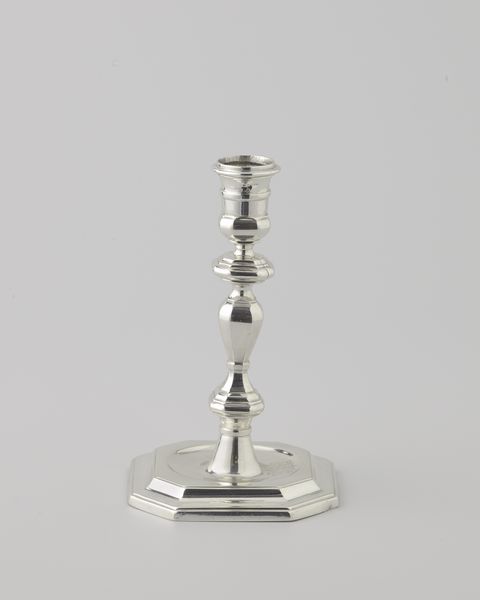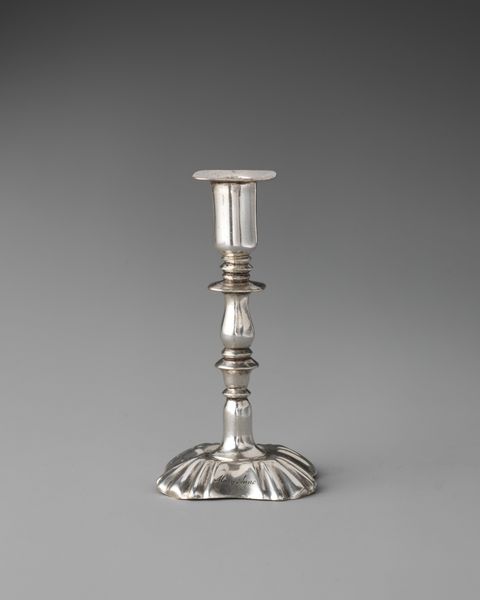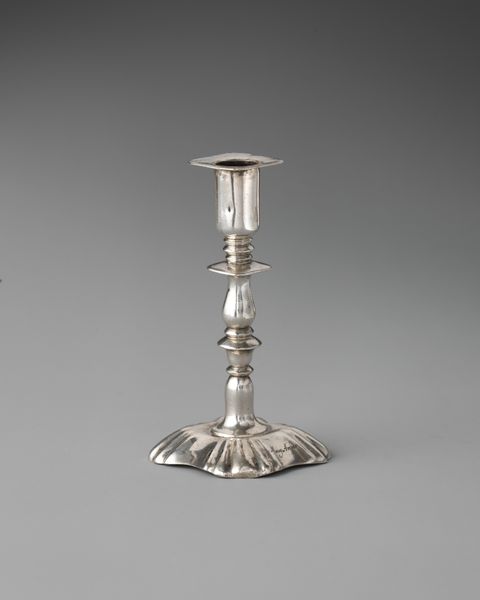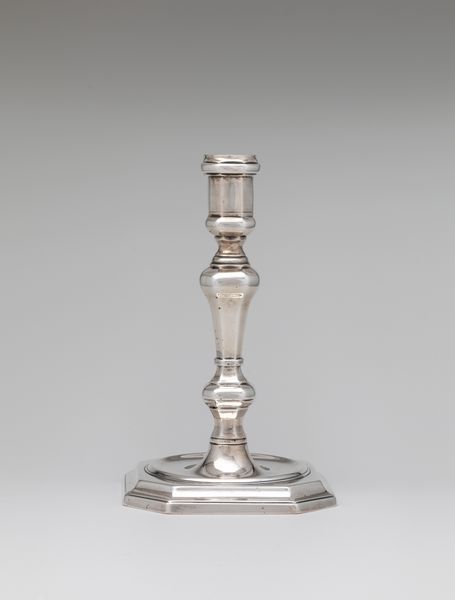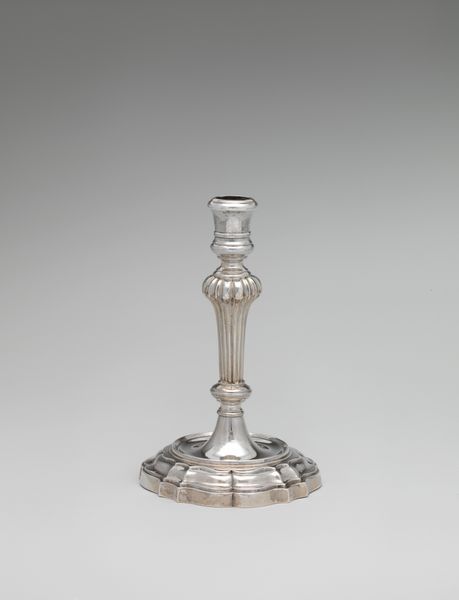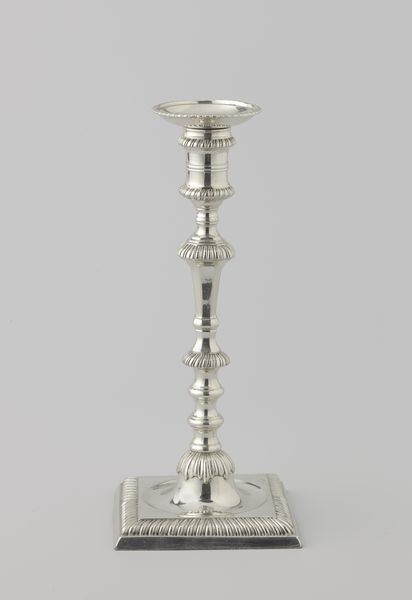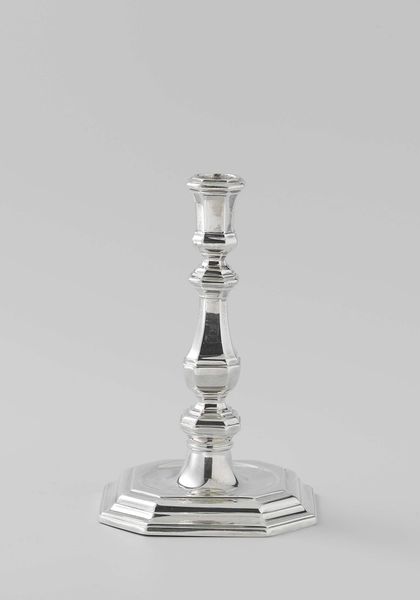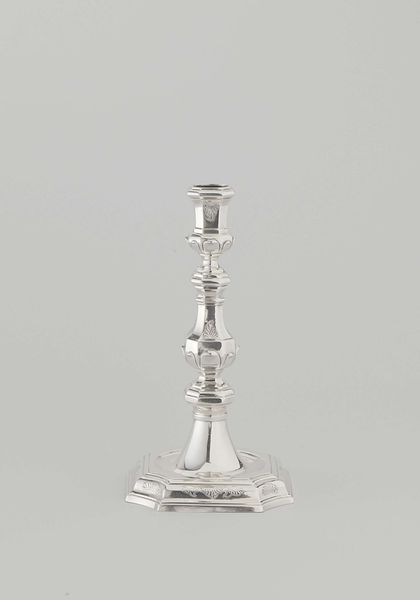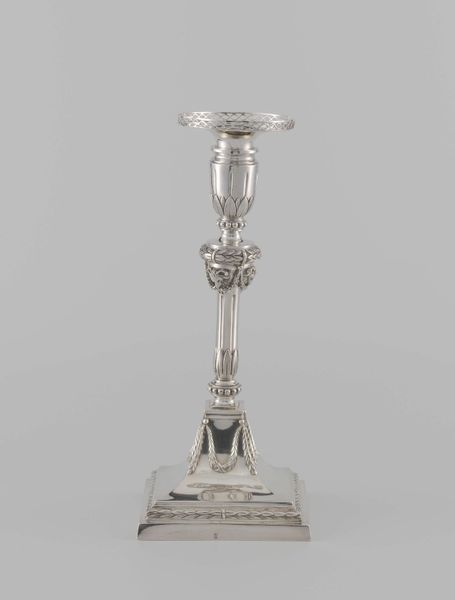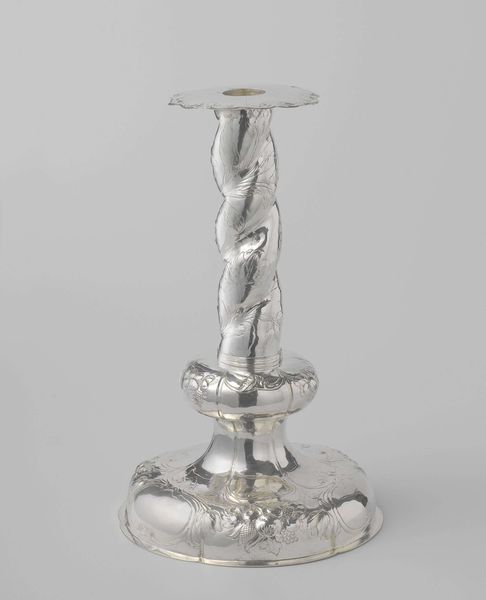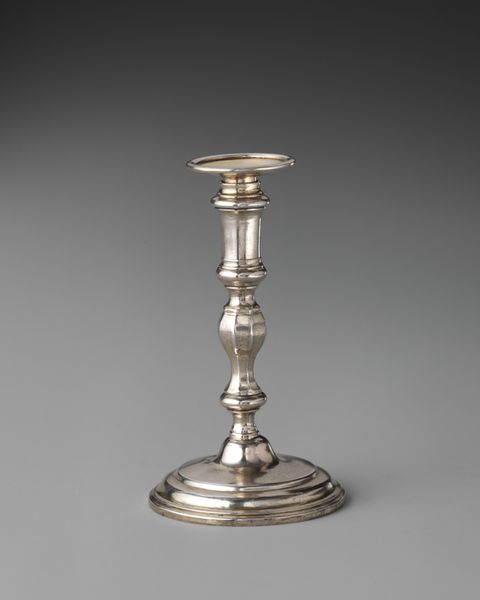
#
3d sculpting
#
3d model
#
3d image
#
3d printed part
#
plastic material rendering
#
virtual 3d design
#
3d shape
#
3d digital graphic
#
metallic object render
#
3d modeling
Dimensions: height 5.4 cm, width 4.3 cm, depth 4.3 cm
Copyright: Rijks Museum: Open Domain
Editor: We’re looking at a candlestick, or "Kandelaar" in Dutch, made in 1741. It appears to be made of silver. Its simplicity is striking, but it also feels quite formal. How does its historical context shape how we should view it? Curator: Consider the social function of candlesticks during the 18th century. Light wasn't just a practical necessity; it was a symbol of wealth, status, and control over the darkness. A silver candlestick like this one would have adorned the homes of the affluent, signaling their privileged position. What do you think the choice of material communicates? Editor: That silver makes it more precious and luxurious...so more a status symbol? It makes you wonder about those who couldn't afford such a basic necessity. Curator: Exactly. The politics of imagery are always at play. This candlestick isn’t merely a functional object; it's a statement of power. Think about the institutions of the time - the church, the state, wealthy merchants. These were the forces shaping the production and reception of such items. The object’s placement within those spaces really adds to its symbolic load. Editor: That's a great point; the same candlestick in a modest home tells a different story than if it were in a palace! I hadn’t considered that level of detail and social context. Curator: And how the museums themselves preserve and display the Kandelaar informs contemporary understandings of Dutch history and design. Editor: I see. It's far more than just an object; it’s a portal into understanding socio-political structures. Thanks for your perspective!
Comments
No comments
Be the first to comment and join the conversation on the ultimate creative platform.
